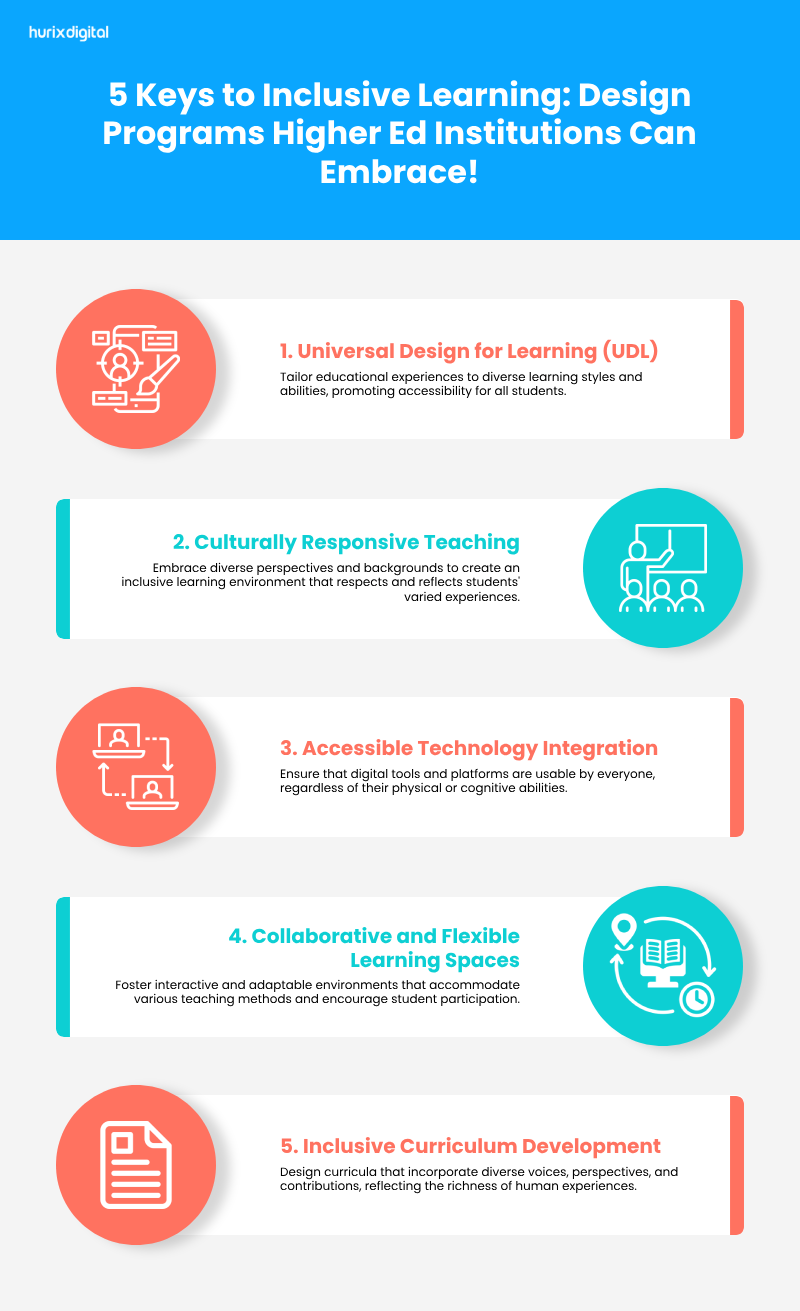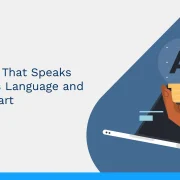Elevate education inclusivity! Discover top 5 keys for higher ed institutions. Embrace these elements to create a truly inclusive learning environment!
Transform education inclusively with Hurix Digital! Embrace the 5 keys for inclusive learning in higher ed. Elevate programs for diverse and accessible education. Contact us now! to know more!

The Importance of Inclusive Learning in Higher Education
Inclusive learning is crucial for creating an educational environment where all students can succeed. It addresses diverse learner needs and ensures equitable access to education. This article highlights key components to enhance inclusive learning in higher education.
Universal Design for Learning (UDL)
Universal Design for Learning (UDL) promotes flexible teaching approaches, addressing diverse learning preferences to engage all students effectively. Research shows UDL can improve learning outcomes by up to 30%. Institutions should:
- Provide multiple means of engagement
- Offer various ways to represent information
- Allow options for students to demonstrate knowledge
Culturally Responsive Teaching
Culturally responsive teaching respects students’ backgrounds, enriching the learning experience. Studies indicate that when students see their culture in the curriculum, engagement increases. To implement this:
- Incorporate diverse authors and resources
- Facilitate discussions on cultural contexts
- Encourage students to share experiences
Accessible Technology Integration
Accessible digital tools help eliminate barriers. A 2022 survey found 85% of students reported improved outcomes with accessible technology. Institutions should:
- Evaluate tools for accessibility
- Train faculty on assistive technologies
- Update platforms to meet standards
Collaborative Learning Spaces
Collaborative spaces enhance interaction and participation. A 2021 study found students in such spaces reported higher satisfaction and retention. Key considerations include:
- Designing adaptable classroom layouts
- Incorporating technology for group work
- Encouraging peer-to-peer learning
Inclusive Curriculum Development
An inclusive curriculum reflects diverse voices, fostering belonging. Research shows students exposed to inclusive content are more likely to succeed. Steps include:
- Reviewing materials for inclusivity
- Engaging community resources
- Involving students in curriculum design
Conclusion
Prioritizing inclusive learning in higher education creates equitable opportunities. By implementing UDL, culturally responsive teaching, accessible technology, collaborative spaces, and inclusive curricula, institutions can enhance learning experiences, ensuring all students have the opportunity to succeed.




